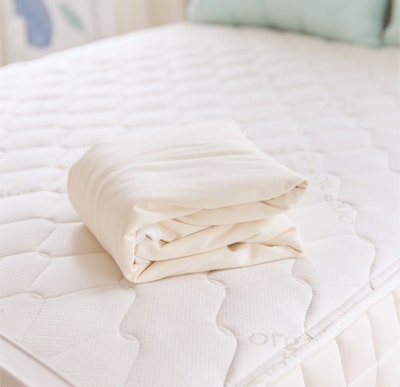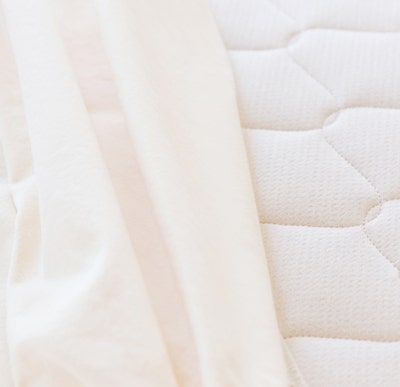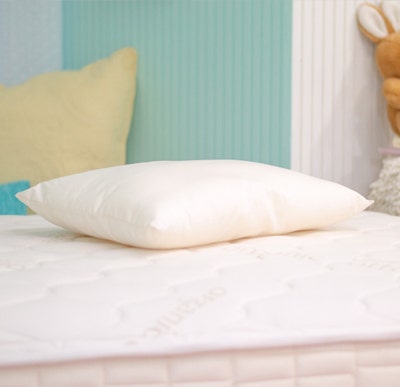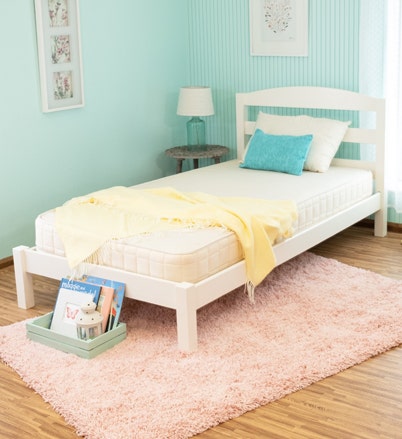Is your tween constantly tired? Could be puberty! Our friend Dr. Arthur Lavin offers insight. Hear more from Dr. Lavin on the ParentTalk Podcast. And for better sleep, consider an organic mattress made just for tweens!
The #1 reason parents seek help with their healthy children is sleep. Every parent becomes deeply familiar with the disruption of sleep that comes with having a newborn up many times a night during their incredible explosion of growth in the first 4 months. This results in unavoidable and very real sleep deprivation.
But, infants mature into toddlers and eventually school-aged kids and, although some suffer from sleep disorders, most develop healthy sleep patterns.
Until puberty. Just as the birth of a new person into the world is a moment of extraordinary change, so is puberty. In fact, it is fair to say that the transition from child to adolescent is a big enough change that a new person is being born then too. That amazing transformation changes so much – including sleep
First Things First: Puberty vs. Adolescence
The processes of puberty and adolescence leave your child as a very different person than the young kid of 2 or even 8 years old. Just think about your own life and how very different you are after puberty. But let’s pause to define the stages of this momentous transformation.
What Is Puberty?
Here we mean the physical changes that transform a child from someone unable to have children to someone able to have children. Yes, there are many familiar changes in the body in both boys and girls that are dramatic and visible, but the ultimate purpose is to make changes that allow for procreation.
What Is Adolescence?
This term refers to the changes in ability and interest that transform a dependent child into an independent adult. The goals of adolescence are to leave a child able to sustain long-term relationships and to succeed at productive work. Success in these new powers means the child will be able to support life as an independent adult.
Here, I’ll cover the changes relating to sleep in both puberty and adolescence with the one word: puberty.
When it Comes to Sleep and Stress…


Let’s keep in mind that while puberty opens exciting new doors for your child, it also leaves them in an entirely new position in the world. Think of the laughing 9 month old, or joyful toddler or imaginative third grader. At a certain level, they have far fewer cares than an emerging high schooler.
Along with opportunities, puberty issues considerable burdens. Will I fall in love? Will it last? Will I be happy in a relationship? Will I get a good job? Will it pay enough? Will I like my work? Will I succeed?
Nearly every adult struggles with these very big questions, and puberty is typically the first time we take on that stress – naturally impacting sleep.
The Sleep Rhythms of the Body
When it comes to sleep at any age, the key concept is rhythm. As parents, the hope is that our children will have a regular bedtime, sleep all night without interruption and wake up well rested around the same, reasonable time every morning. But, what causes us to have a rhythm in the first place?
It’s connected to our hormones and to the sun cycle. Humans experience a nightly rise in growth hormone and a morning rise in cortisol. Since these rhythms approximate a 24-hour cycle, they are called “approximately daily rhythms,” circa dian, or the term you’ve likely heard: circadian rhythm.
Disruptions to routine and lifestyle, as well as hormonal changes, can disturb circadian rhythm and sleep.


Puberty and Sleep: What Changes?
Puberty is powered by hormones, primarily testosterone in the male and estrogen in the female. The profound transformations during this time impact a full range of the body’s chemistries and their power can be seen in the sleep rhythms of most adolescents.
Changes like this are unique to the newborn stage and puberty. These phases are the only time that the cycle of sleep shifts away from the cycle of the sun. For the newborn, sleep only happens between moments of eating, with no connection to sunrise, noon, sunset or dark, much to the despair of exhausted parents.
But for the child in puberty, there are still stretches of many hours of uninterrupted sleep. The difference is that they no longer synchronize with sun cycles, but rather are very much out of phase with them. These changes are not universal but are very common.
Most parents notice that as their child goes through puberty, they begin to go to bed later. If left alone, many adolescents will fall asleep past midnight and try to sleep until around noon, representing a 4-hour shift in the more dominant pattern of falling asleep around sunset and waking at sunrise.
The Power of a Forced Mismatch


The problem for the majority of adolescents whose circadian rhythms shift four hours is that the rest of the world doesn’t shift along with them. In particular, parents, siblings outside puberty and school stay on their regular rhythms.
The greatest power of this mismatch is the forcing of a “midnight to noon” person in puberty to wake up every day at 6 a.m. and be ready for studies in the classroom by 8 a.m. It is common in high schools across the nation to see students enter the school very tired and to struggle in the early morning classes.
This strain is so well known that many have looked into schools that respond to the impact of puberty on sleep by shifting the schedule of high schools to open at 1 p.m. and end class 8 p.m. The problem is that this forces a mismatch in the sleep patterns of parents and teachers. This model has been tried in some places and found to help adolescents improve performance, but so far in the battle of circadian rhythms, the adult cycles prevail. Sadly this leaves millions of adolescents suffering from the forced mismatch of rhythms.
What to Do for Your Child
As long as an adolescent’s brain seeks sleep from around midnight to around noon, there will be tension between their sleep needs and life’s demands. So the best path forward is to help your adolescent compromise by slowly going to bed about 15 minutes earlier every night until they can no longer fall asleep at the earlier time.
Even achieving a bedtime of 11 p.m. in this manner at least offers 7 hours of sleep a night if waking has to be by 6 a.m. Such adjustments give the adolescent a sense that you respect the tension caused by puberty’s impact on sleep and also can relieve much of that tension.
Dr. Lavin’s Bottom Lines on Puberty and Sleep
- Puberty is a time of extraordinary transformation in which a child unable to reproduce becomes a person who is able. Along with the bodily transformations come new responsibilities and worries that can affect sleep.
- During this great change, sleep rhythms can shift. Typically, adolescents will move off a sleep rhythm of going to bed soon after sunset and rising around dawn, like younger children, toward getting sleepy around midnight and wanting to sleep until noon.
- Such shifts run up against the school schedule which has not shifted and asks them to wake at 6 a.m. and be alert and ready to learn by 8 a.m.
- Some high schools have tried adjusting their schedules to start and end later with benefit to adolescents, but this concept has not caught on.
- This leaves so many millions of adolescents with a tension between their natural sleep rhythms of puberty and the school schedule.
- One path forward is to help your adolescent gradually try going to bed 15 minutes earlier every few days until they can no longer fall asleep at the earlier time.
Puberty is a powerful force and wonderful transformation. So many rhythms shift, and sleep is often one of them. Knowing this and how to help can make a difference!
 BABY
BABY  KIDS
KIDS  ADULT
ADULT  LEARN
LEARN  STORES
STORES 





